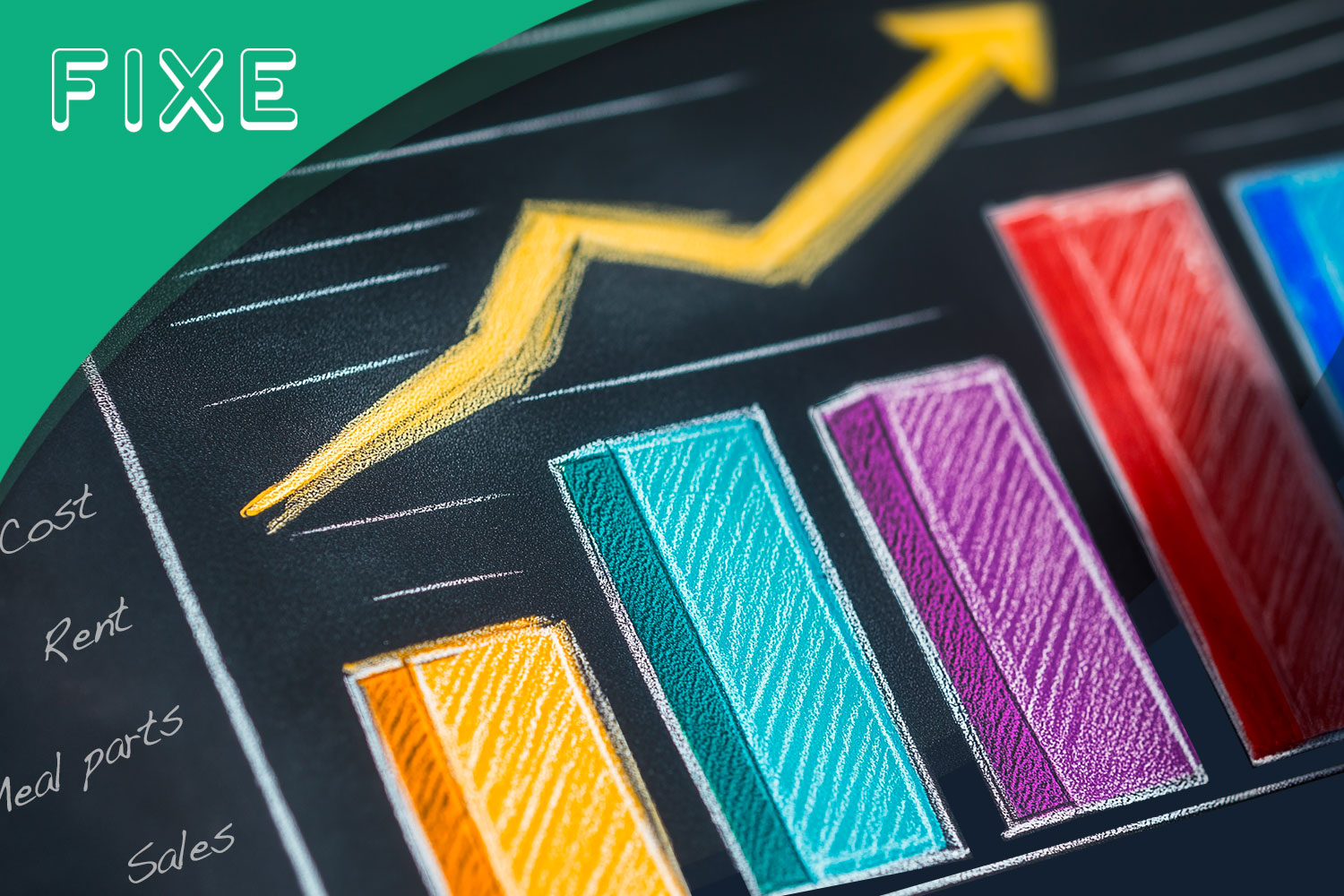Which sales metrics and efficiencies should restaurants focus on to determine whether they’re succeeding in business? I’ve identified some metrics that all restaurants should want to live by.
PRIME COST
Prime cost is the cost of goods sold (COGS) plus your labor costs. Prime cost should be under 60%. Whether you are a steakhouse where steak is 40% of the cost and labor is 20% of the cost, or if you’re an Italian restaurant where the pasta is only 20% food cost, but there’s more labor, those two numbers combined should be under 60%. For every dollar, 60 cents are costs, and 40 cents go to the bottom line. Really high performing restaurants are even lower than that.
RENT
With rent, the target should be 8% of sales. If sales are not at that metric, then you need to figure out a way to drive more sales to your establishment. Raising prices is probably the last option you want to do. Figure out other ways of selling your food, whether it’s adding another meal part, catering, third party deliveries, or marketing.
MEAL PARTS
In any given week, restaurants have 21 possible meal parts: breakfast, lunch and dinner, seven days a week. In order to have a successful concept, you need to be really good at 10 meal parts. You can be really good at breakfast and lunch. You can be really good at lunch and dinner. Weekend brunch and catering can also help business, but it’s very hard to just be strictly good at one meal period and nothing else and have a successful restaurant.
Decide which meal parts you’ll be open for business. If you eventually want to expand your day part, I would be very cautious of looking at your POS system to see your sales per hour. Back in the day, when I worked at Baja Fresh as an intern, if they weren’t averaging $150 an hour in sales, then it wasn’t worth it for them to be open. That’s how they tracked sales. I wouldn’t be able to recommend an average sales per hour threshold that works for every restaurant. That metric is different from restaurant to restaurant and varies based on factors like how big the restaurant is versus how small the restaurant. Once you find that sweet spot, when you get to times like holidays and can’t hit your break even point average, then you can decide whether it’s worth it to be open those days.
PERCENTAGE OF SALES: NET INCOME VS. GROSS INCOME
You should also be looking at your percentage of sales as a percentage of net income and not gross income. I know people would differ with me on this. I’m not going to say one is better than the other, but let’s say I sell a burrito for $10. I discount it by $1 and sell it for $9. Technically, to know your food cost, you would want to take your cost of goods sold and divide by the $10 number. This is how much the burrito cost me to make. However, in terms of the true cost of goods sold, I actually prefer basing it off the $9 because ultimately the $9 is what’s going into your bank account. Not $10.
I think of percentages in terms of net income, not gross income. That’s what we typically try to get the FIXE clients to look at, at least on day one. Eventually, when they become more sophisticated and we want to change those percentages a little bit, we’re happy to do it, but for day one, we do it off net sales. Look at the percentage of the dollars that are going into my bank account. What’s it costing me? Otherwise it’s fake dollars. I could discount everything down to $1 and make it look like a great cost.

